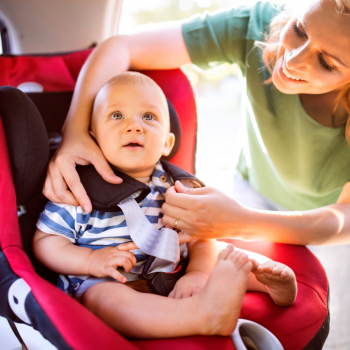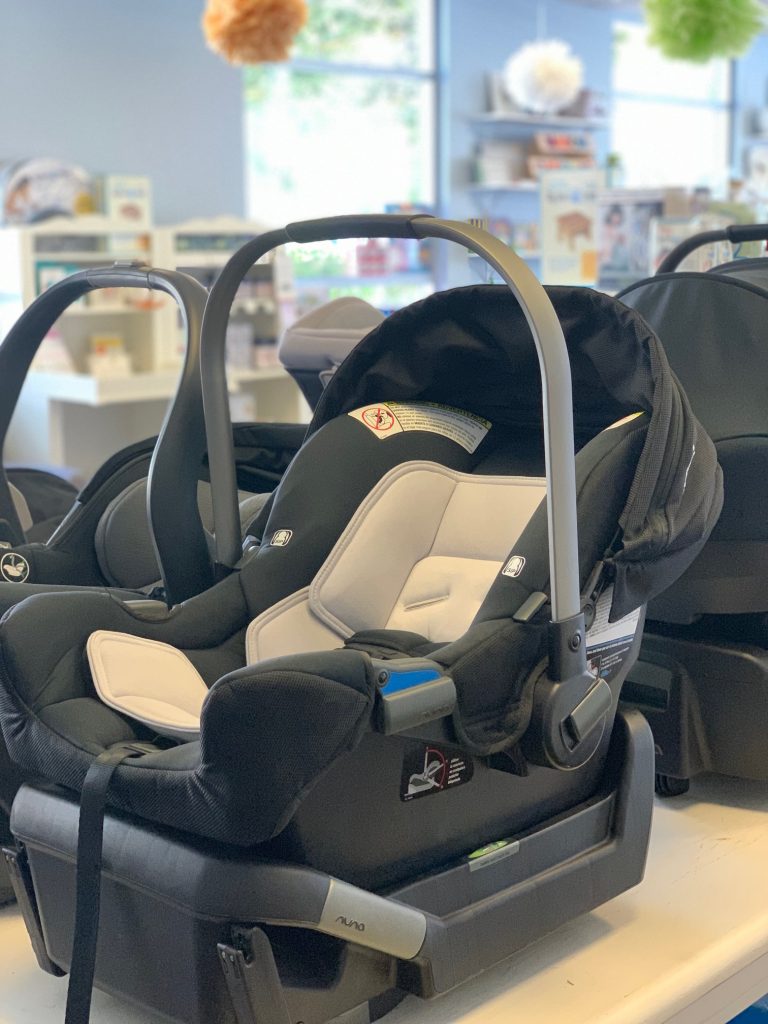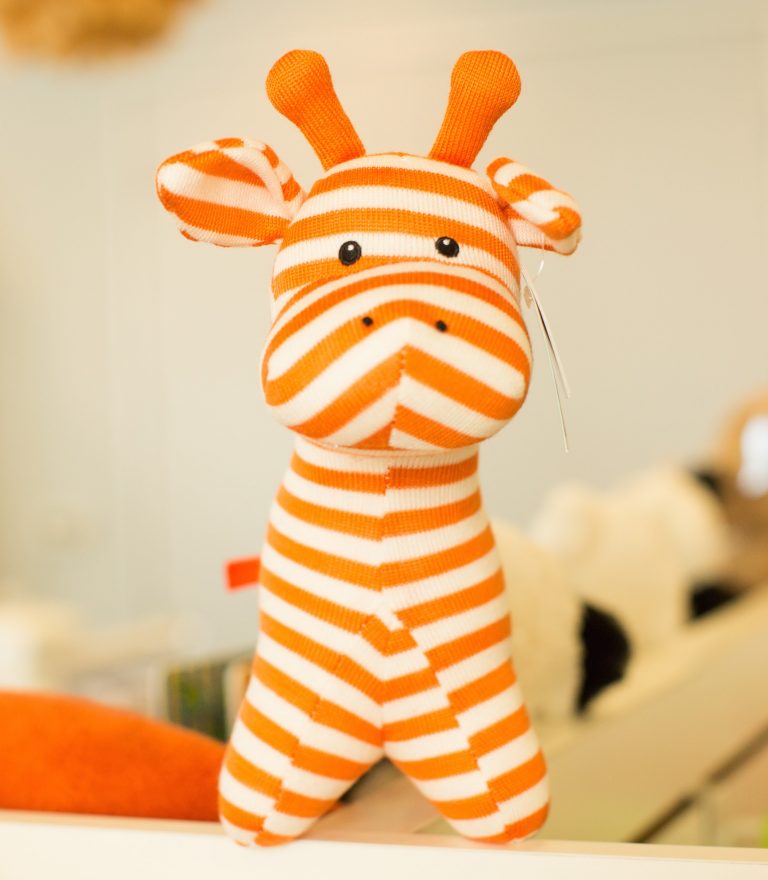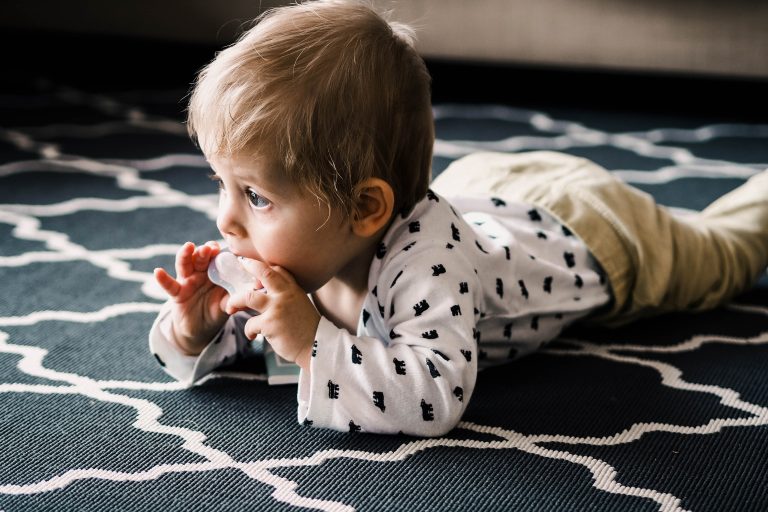Got a Child Safety Seat? Buckle Up for These 7 Truth Bombs
These 7 Take-Aways from Our Resident Car Seat Girl Katie Prochaska will Ensure Your Family’s Safety on the Road
Earlier this year, Katie Prochaska, our resident “Car Seat Girl” appeared on our podcast, The MotherHood Podcast. In the episode, she dropped her wisdom left and right when it comes to car seat safety. Since this week is Child Safety Seat Week, and this Saturday is Check Your Car Seat Day, we’re highlighting 7 key take-aways from our chat with Katie.
1. 70-90% of car seats are misused.
And, a bulk of that has to do with misinstallation. In San Diego County, we are closer to the 90% range when it comes to car seat misuse! Of those, 96% of those parents believe the car seat is installed correctly. The best way to falling into this statistic? Schedule an appointment with a local certified Child Passenger Safety Technician (CPST).
2. Most Fire Department, CHP, and Law Enforcement staff do NOT have the appropriate training to safely install car seats.
For many of us, we associate car seat safety checks with fire departments and law enforcement. We assume we can pull up our cars to a station, get checked, and can be rest assured that we’ve received the seal of approval from someone who knows exactly what to look out for. We see this step as an abundance of precaution, even.
The truth is (at the time this podcast was recorded in early 2019), there is only one CHP officer in North County that is CPST certified. As such, he gets booked out months in advance because he’s so in demand. None of the fire departments in the North County area have a CPST on staff, and there are only couple local EMTs only with CPST certification.
Furthermore, CPST re-certification is required every two years, so some of the above may not be current. Things change all the time in the world of car seats, so continued education is especially important to stay current.
If you make an appointment with a local law enforcement or fire department technician, or any other CPST for that matter, you will want to check online to see if their certification is current.
3. You want to keep your kids rear-facing as long as possible.
The federal requirement is only one year, but that is “scary unsafe” according to Katie. Best practice is at least four years old — if not more. On average, most car seats on the market are moving to at least two years old for recommendations. State laws are moving in that direction. Most convertibles on the market today are going to get you to 40 inches or 40 lbs. rear-facing which is the 50th percentile for a four year old!
The number one reason why parents are turning their kids to forward-facing prematurely is because their kids ask to turn forward. This is one of the many parenting decisions you’ll have to make, and it’s important to remember that sometimes our job as parents is to make the unpopular decision. We may even have to ward away unsolicited advise from well-meaning family and friends. Some people worry that their children are uncomfortable, but we forget how flexible our children can be at that age.
It’s important to understand that kids have space in between their vertebrae. This is one of the reasons why their spine is so fragile and vulnerable. Facing forward too early puts their spines in danger in a way that rear-facing prevents.
A common concern is that as our children grow, they appear uncomfortable with less space to spread out. When they sleep in those weird positions (think: the head bob when they are falling asleep in the car or their contorted positions in the crib), remember that the space between their vertebrae allows for them to still feel comfortable. They physically cannot get kinks in their necks the way we do. Same goes with their legs and where they rest in the car seat to get comfortable (no matter how uncomfortable it may look to us as adults).
4. Boostering is more of a developmental milestone.
Best practice for booster training your child is to wait until they are at least five years old. Before that, a child generally cannot grasp the consequences of not sitting appropriately in a booster seat. A booster is not a child restraint. Every step up in car seating is a step down in protection. A booster is not going to hold your child back. It’s only job is to literally “boost” your child up so the adult seat belt is fitting on their body the way it fits a larger body. In the event of a collision, your child is going to move the same way an adult body would move. As such, if your child is not sitting correctly, they are vulnerable.
When switching to booster seat (ideally with your 5 year old, or older), you can start with short drives only to ease into it. It is alright to switch back and forth depending on trip length.
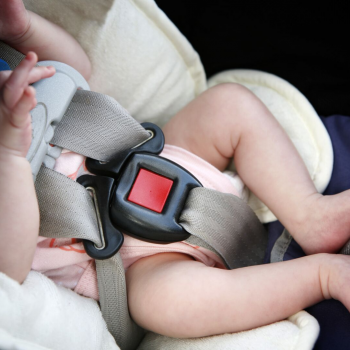
5. One Size Doesn’t Fit All When It Comes to Car Seat Selection
Budget: Make sure you know what budget you’re working with. Car seats have the same safety standards across the board, but knowing what tier you’re shopping in helps to focus your search.
The Height of the Parents & Size of the Car: This is especially important when you take your car size into consideration. Think about where you want to be able to have your driver and front passenger seats in relation to your car seats in the back. Most car seats do not allow contact between your car seat and your vehicle seat in front. Light contact (brushing but car seat can move freely), but firm contact is not safe.
How Many Children You Plan to Have: If you have a sedan and plan to have three children, you may want to consider purchasing a narrow, side-to-side car seat. It is so much cheaper to by a narrow, higher-end car seat than it is to buy a new car.
6. Anything that doesn’t come out of the box with your car seat from the car seat manufacturer should NEVER be used with your car seat.
Extra head rests, harness pads, changing car seat cover to softer fabric are considered unsafe. They are not crash tested with those car seats. There is no federal regulation for how to “crash test” them. Even if it states so on the packaging, there is no way of knowing exactly how they were tested.
When the base to your car seat is appropriately installed and leveled, your baby’s head won’t flop around while driving. When the harness is coming from the right spot in relation to your baby’s shoulders, it’s further away from the neck so it wouldn’t be “cutting” into the baby’s neck. A lot of car seats now come out of the box with their own harness pads and additional padding and those are safe and appropriate to use. Nuna, for example, has a body support pad, as well as a low birth weight pillow (with weight limits).
7. Mirrors and Toys Attached to Car Seat Run the Risk of Becoming Projectiles in the Event of an Accident
An object in motion stays in motion. In the event of a collision, any mirrors around the car seat, toys attached to car seat, are subject to becoming hazardous items. Strollers too are especially dangerous, especially for hatchbacks, if not secured down with bungee cords or cargo nets.
If you’re going to have toys around your child when driving, we recommend soft toys to include soft books, silicone things, and crinkle paper.
As for mirrors, any CPST will tell you that it’s best to not have them at all. Not only are they a potential projectile, they can also become a distraction to the driver. It’s tempting to look back regularly to check on baby, which takes your eyes off the road even momentarily. Best practice, if you’re nervous, is to just pull over to check on the baby.
Katie’s last piece of advice is this: embrace installation education! The best person to learn about car seat installation from is a CPST. Safe Kids is one of three national coalitions that certify CPSTs. Their site has many resources for parents to include a “Find the Tech” link. These techs will help teach you how to install your car seats yourself versus simply installing it for you. This way, you’ll know what to do when you have to move car seats or are on vacation.

